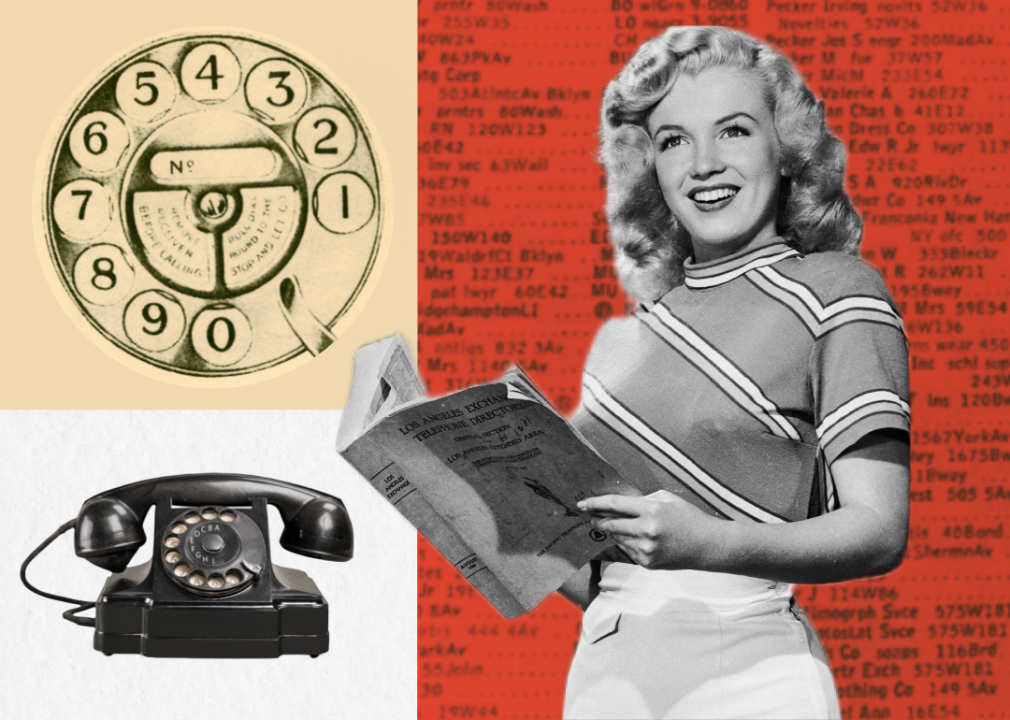The history of the American phone book
Photo Illustration by Elizabeth Ciano // Stacker // Getty Images
The history of the American phone book
Photo illustration with Marilyn Monroe holding phone book.
Once a mainstay of homes, businesses, and phone booths everywhere, the phone book has (mostly) gone the way of the dodo.
Spokeo examined historical documents, news reports, and other sources to chronicle the American phone book’s fascinating history.
Before search engines, GPS, and social media, people used phone books for phone numbers and addresses of local people and businesses. One of the earliest forms of data collection and public access, phone companies published the books—White Pages for residential and Yellow Pages for business—by city or district, including all phone company customers. Users had to pay a fee to remain unlisted.
Ushering in the demise of the phone book are the internet and mobile phones. With phone books being bulky and updated just once yearly, the regularly updated internet proved far more accurate and reliable. Meanwhile, a 2004 law stipulated that cell phone numbers may not be included in phone directories. That left just landlines in the directories, which quickly rendered them largely obsolete as more than 7 in 10 adults were wireless-only by the end of 2022, according to National Center for Health Statistics survey data. Most phone companies stopped dropping the directories on doorsteps in the 2010s, although White Pages and Yellow Pages are available online.
Keep reading to learn more about the history of American phone books and where you can still access them today.
![]()
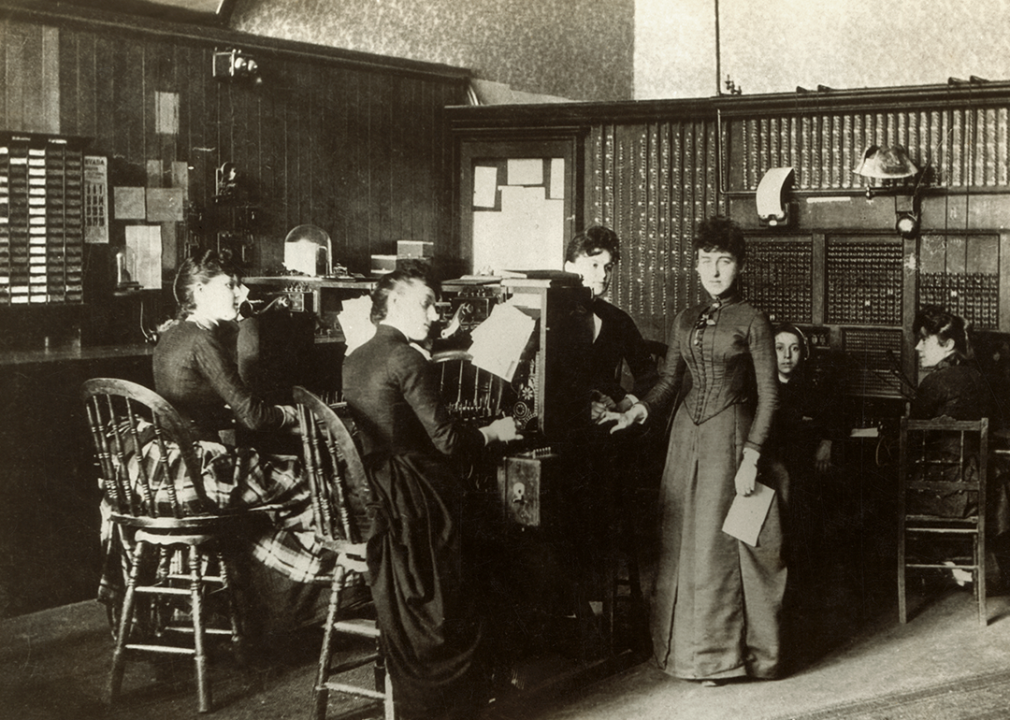
George Rinhart/Corbis via Getty Images
1878: First phone directory printed in Connecticut
American Telephone Exchange with Operators posing for a photograph.
Telegraph manager George Coy of New Haven, Connecticut, developed an exchange—the system that allows people to call each other—within a year of attending Alexander Graham Bell’s demonstration of a new invention called the telephone. The world’s first telephone exchange took place on Jan. 28, 1878.
Three weeks later, Coy published a list of New Haven’s 50 phone subscribers (names of people and businesses only, as phone numbers didn’t yet exist): the first-ever phone directory. The list swelled to more than 400 names by November of that year, necessitating a booklet with phone usage instructions, essays on phone technology, and advertisements.
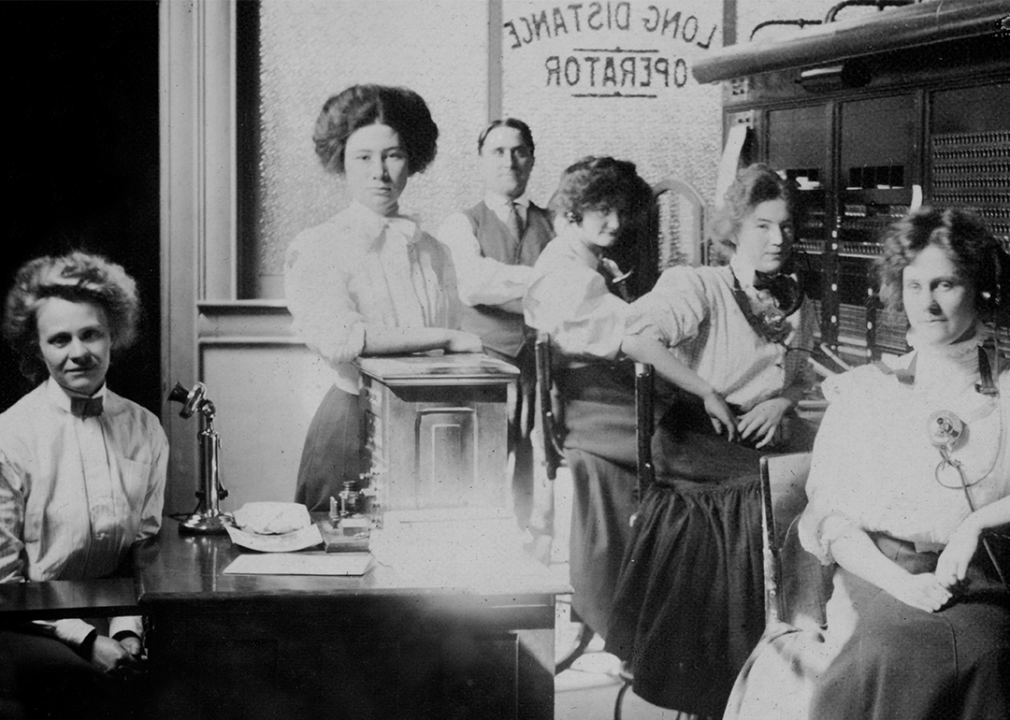
Kirn Vintage Stock/Corbis via Getty Images
1879: The arrival of telephone numbers
Switchboard operators pose for a photo.
A Christmastime measles outbreak in Lowell, Massachusetts, led to the invention of telephone numbers.
At the time, telephone subscribers had to ask an exchange operator, who had memorized the names of local subscribers, to physically connect the caller’s line to that of the person being reached. In 1880, two of the four-person operator staff in Lowell contracted measles, leaving telephone company owners in a panic that they would lose business. Dr. Moses Greeley Parker, a company stockholder, suggested using a directory of numbers to identify customers rather than names, and the phone number was born.
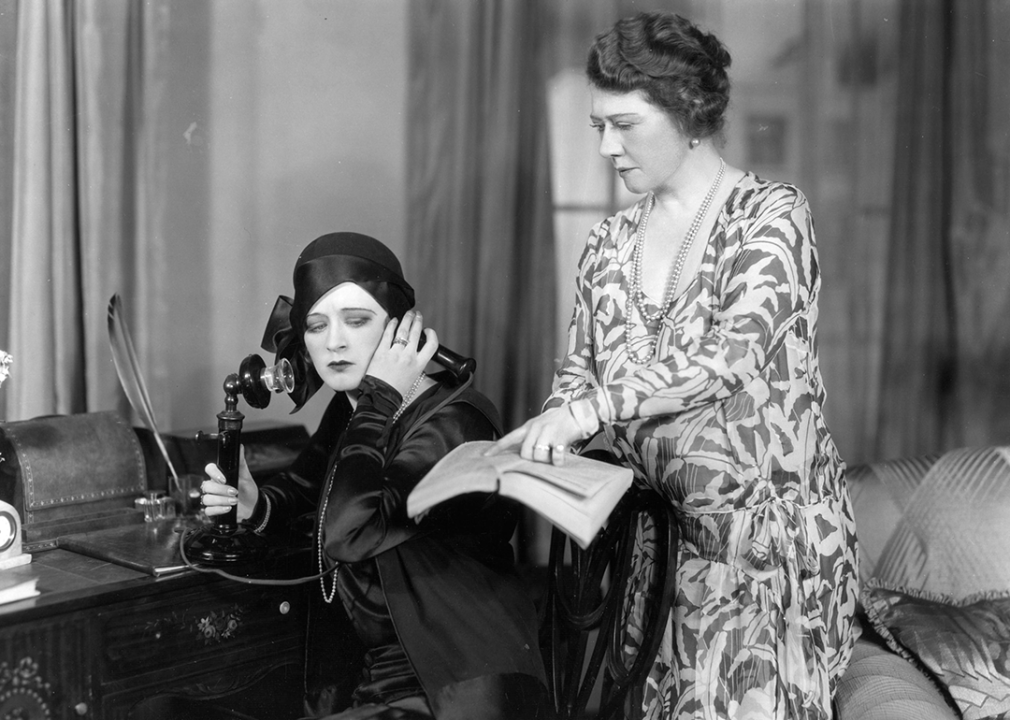
Sasha/Hulton Archive // Getty Images
1883: The Yellow Pages are invented
A woman makes a telephone call, while her companion points out the number in a directory.
The business listings directory got its iconic look by accident in 1883 when a Cheyenne, Wyoming, printer ran out of white paper and made do with yellow paper instead. The look stuck; in 1886, Reuben H. Donnelley created what became known as the Yellow Pages for commercial listings.
The localized business directory organized companies by category and also sold ad space. The directories were distributed as standalone volumes as well as companion sections to residential directories (delineated with white pages).
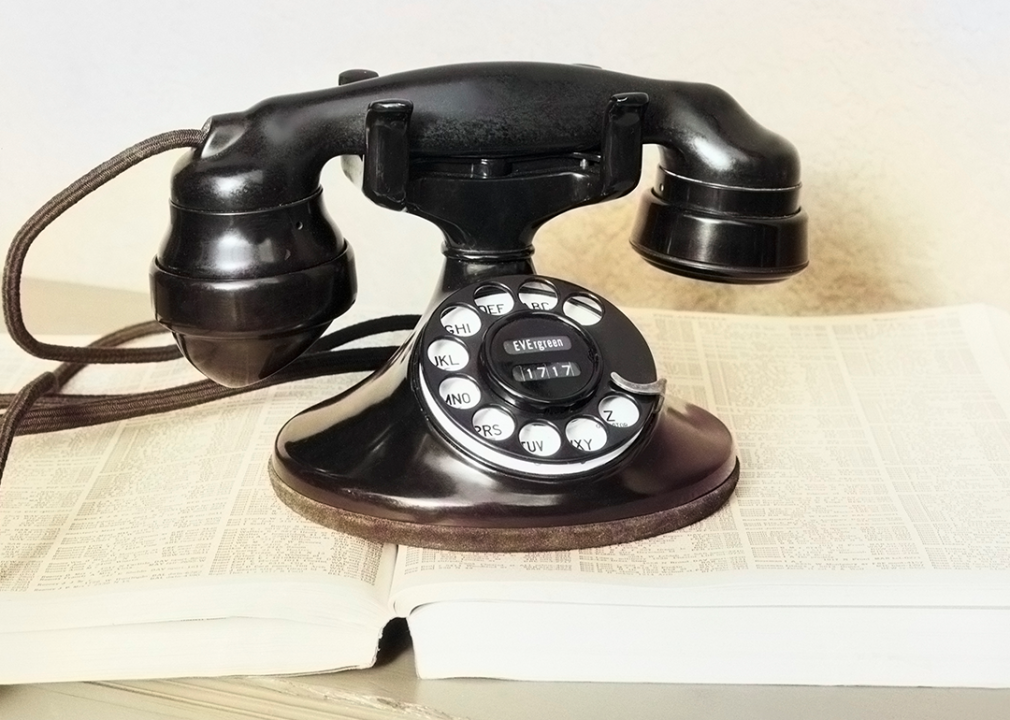
H. Armstrong Roberts/Classicstock // Getty Images
1919: Rotary phones are introduced
Black rotary dial cradle telephone on telephone number directory book.
As telephone use became widespread, call volume threatened to overwhelm the operators facilitating connections. In 1919, AT&T introduced phones with numbers on rotary dials that allowed phone owners to dial each other directly. Over the next several decades, rotary phones gradually phased out manual operations, which led to a reduction in operator jobs—an industry dominated by women.
The last city to convert to automated dialing was Avalon, California, in 1978.
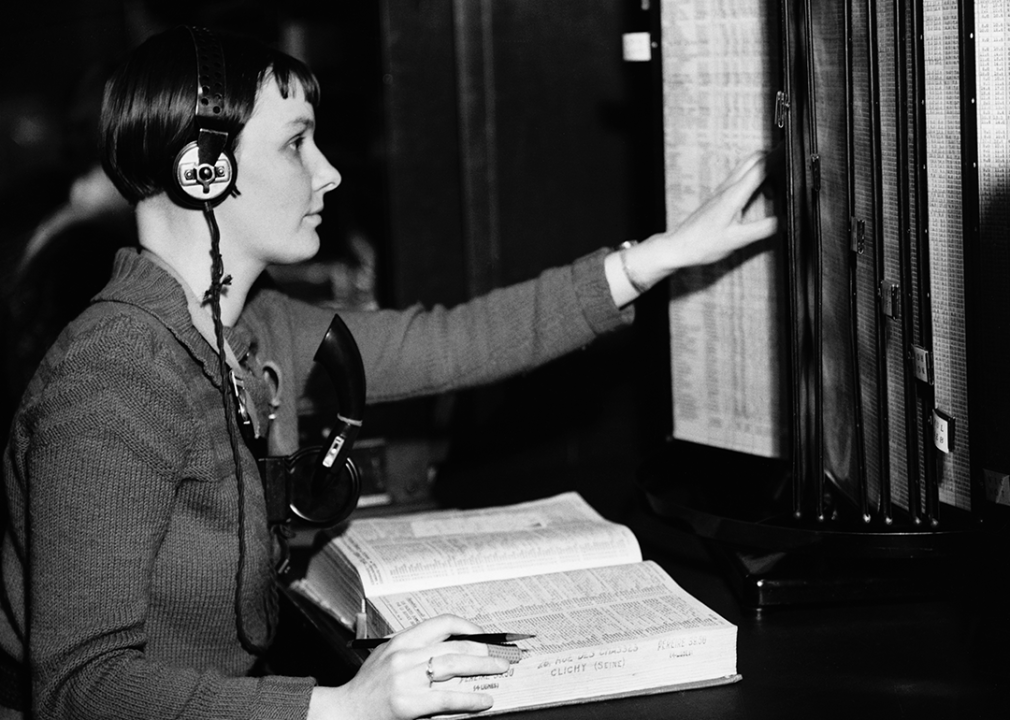
Hulton-Deutsch Collection/CORBIS/Corbis via Getty Images
1934: Communications Act requires public access to phone directories
Telephone operator looking up address.
The Communications Act of 1934 created the Federal Communications Commission to regulate the telephone, telegraph, and radio industries (and, later, newer technologies such as television and mobile phones). Language included in this act completely changed phone book distribution.
Before the act’s passage, telephone companies only printed and published the names and phone numbers of their subscribers. With the new law stipulating that this information be publicly available, competing phone books were published and delivered to people’s doorsteps.
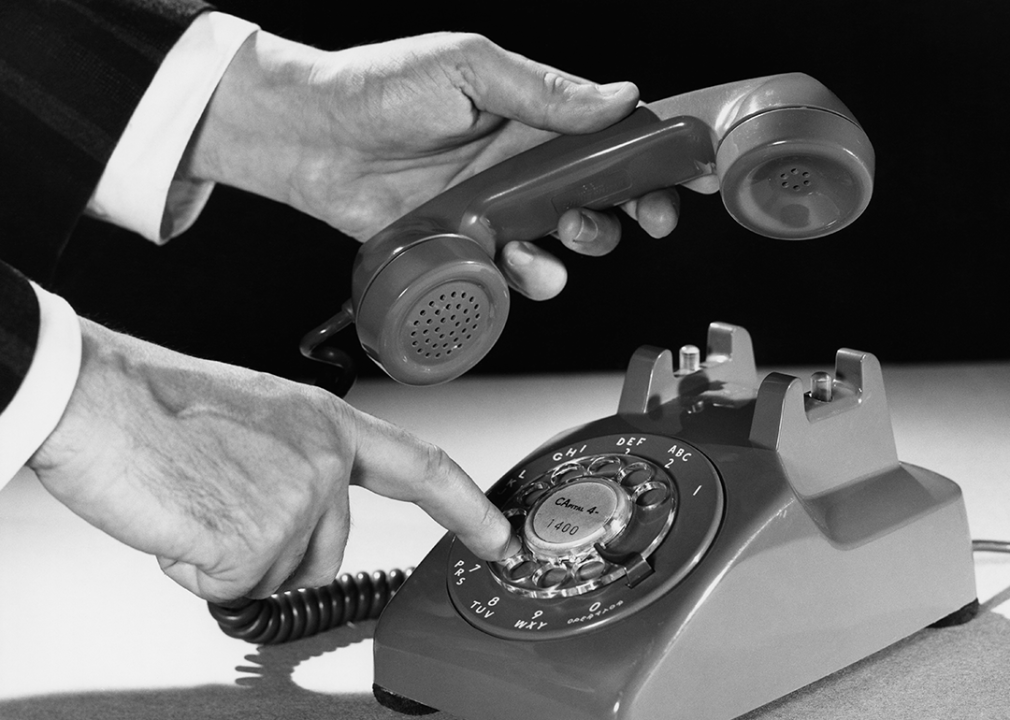
Harold M. Lambert // Getty Images
1962: All-digit dialing begins in California
Hand dialing number on a rotary telephone.
Early phone numbers consisted of a two-letter abbreviated exchange name plus five digits, like Murray Hill 5-9975, Lucy and Ricky Ricardo’s phone number on “I Love Lucy.” As phone lines became more popular—between 1942 and 1962, the number of phones in the U.S. grew 230% to 76 million—telephone companies realized they would run out of phone numbers.
All-number calling was rolled out to replace exchanges with digits and allow for more phone number combinations. To the surprise of phone companies, customers fought “creeping numeralism” in an attempt to save their beloved exchange prefixes.
In California, where the conversion started, protesters formed the Anti-Digit Dialing League, which sued Pacific Telephone and won a temporary stoppage of the conversion. The California Public Utilities Commission rescinded its stoppage order in 1964, allowing progress to continue.

Kichigin // Shutterstock
1993: Phone directory becomes available on CD
A stack of books next to a CD-ROM.
Before the internet made research easy, databases moved from paper to CD-ROMs. PhoneDisc put the entire country’s phone books onto a set of five CD-ROMs and made it searchable. This eliminated the need to call directory assistance to get a phone number from another city or state and made tracking down phone numbers much faster.
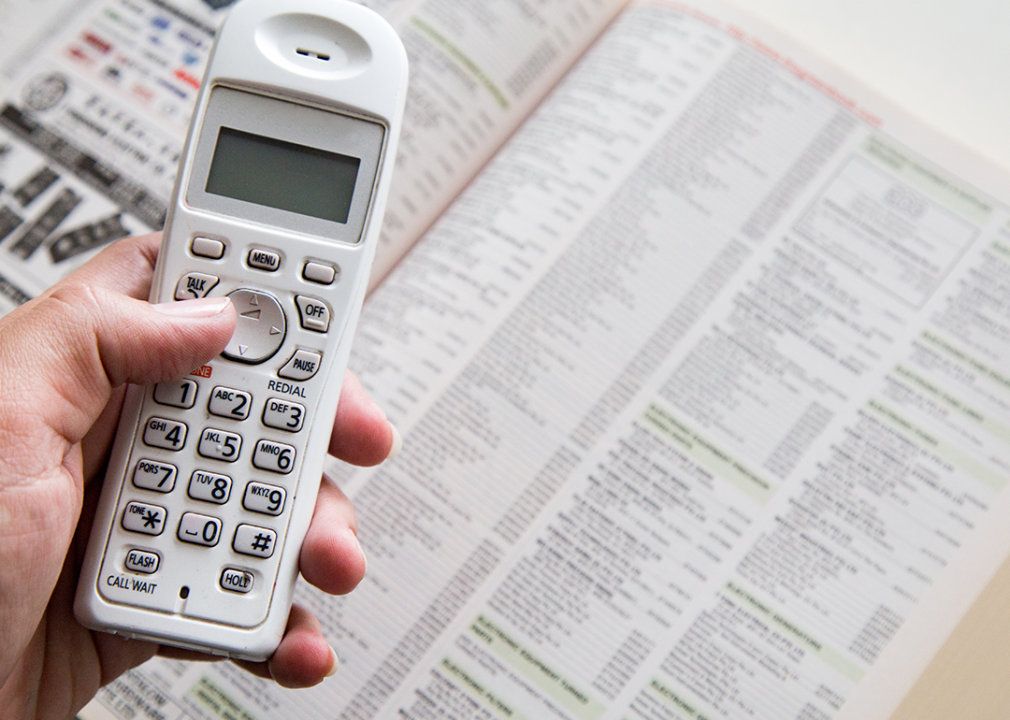
URAIWONS // Shutterstock
1996: Telecommunications Act reaffirms public access to directories
Hand holding phone with White Pages directory open.
Although technology propelled the telecom industry forward, old regulations remained in place for decades until President Bill Clinton signed the Telecommunications Act of 1996, the first major overhaul of the 1934 legislation.
The law was designed to promote more competition and innovation across the communications industry by removing barriers to entry and allowing companies to provide service in any market, which meant regional telephone companies were now allowed to offer long-distance service. But to do so, those companies had to comply with a 14-point checklist laid out in the act. This included an anti-discrimination stipulation for White Pages listings, in that they had to be comparable, no matter which carrier the consumer used.
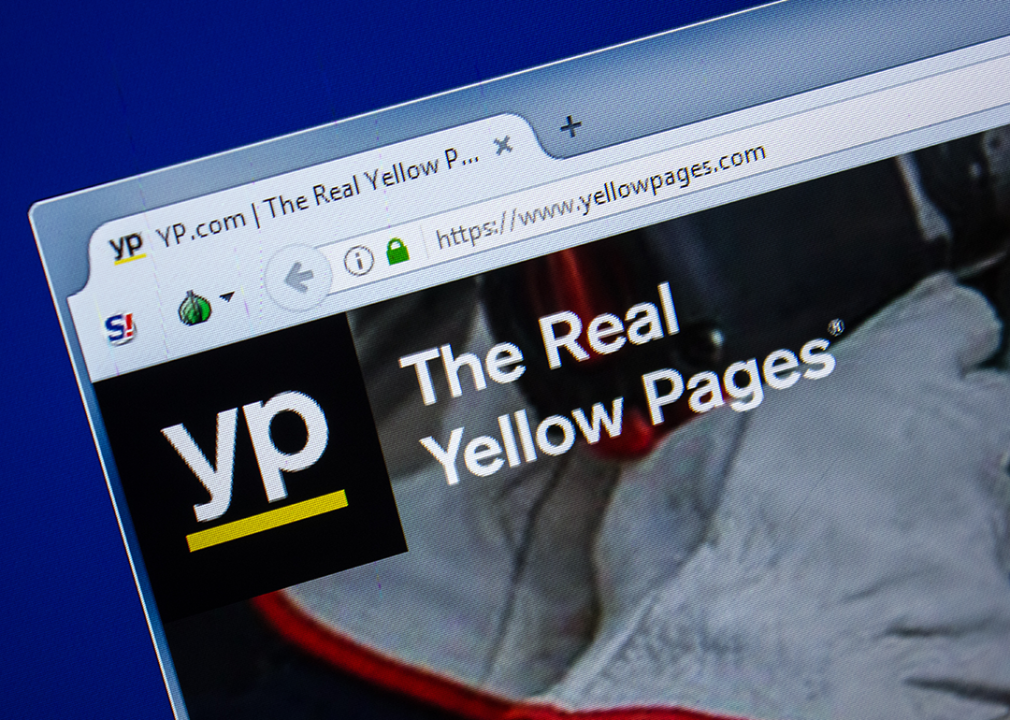
Sharaf Maksumov // Shutterstock
1996: Yellow Pages gets a website
Homepage of yellowpages.com.
Before the internet, people turned to the Yellow Pages to find a business. But with the directory coming out just once a year, information became quickly outdated as the year went on.
When yellowpages.com went live, local businesses could update information in real time so customers could always find the correct number to call.
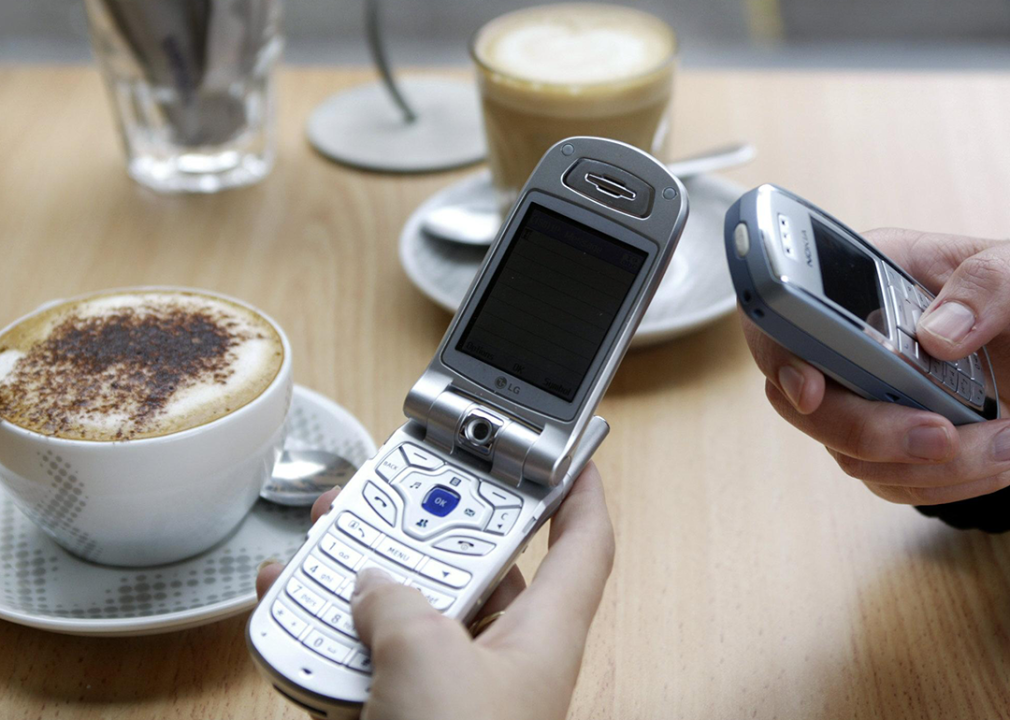
REBECCA HALLAS /Fairfax Media via Getty Images
2004: Congress bans wireless telephone directory
People using cell phones in coffee shop.
Unless you paid to be unlisted, landline numbers were automatically added to phone books. When companies tried to do the same with cell phone numbers, Congress passed an amendment to the Communications Act of 1934 to prevent a mobile phone book.
This was a departure from previous legislation that prioritized free access to information. Privacy protection was one of the main drivers of this ban, as mobile phone users had gone years with no directory and expected mobile numbers to be private. At the time, mobile service was usually charged by the call or minute; the bill aimed to prevent users from receiving unwanted calls and inflated phone bills.
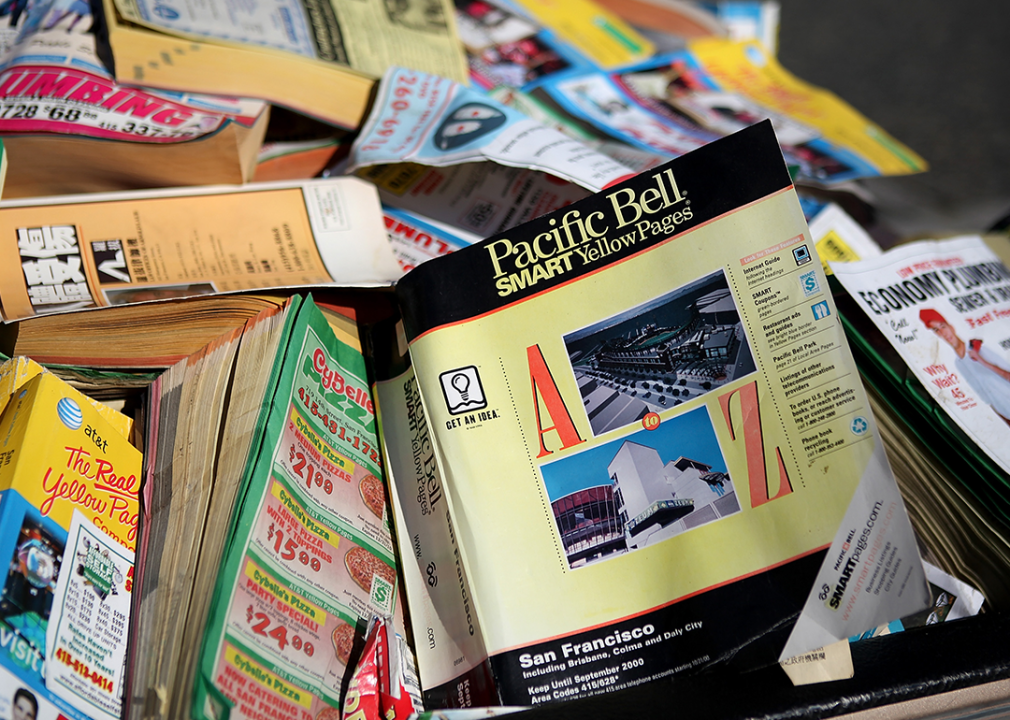
Justin Sullivan // Getty Images
2009: Movement to stop phone book delivery gains steam
A large pile of San Francisco phone books.
Thanks to the 1984 breakup of AT&T, consumers started receiving piles of phone books—upwards of 10 per address in California—from regional companies that all wanted their directories to be the most popular. People quickly tired of receiving so many phone books, particularly when mobile phones were becoming the phone of choice—in Ohio alone, about 3 in 5 phone numbers in use were cell phones, according to The Plain Dealer.
Over the next few years, many cities and states enacted legislation to stop the automatic delivery of phone books.
Yellow Pages are still available in their physical form. Some businesses see the physical directory as a viable advertising tool to target those who don’t use the internet and who may still rely on print directories—between 20% to 30% of people, according to Thryv, a phone book distributor.
Story editing by Nicole Caldwell and Elena Cox. Copy editing by Paris Close.
This story originally appeared on Spokeo and was produced and distributed in partnership with Stacker Studio.
